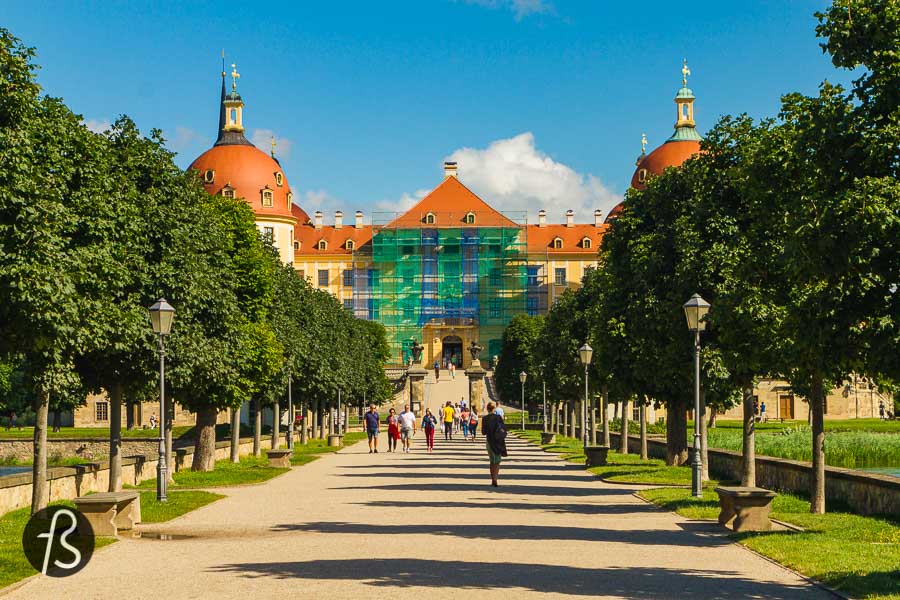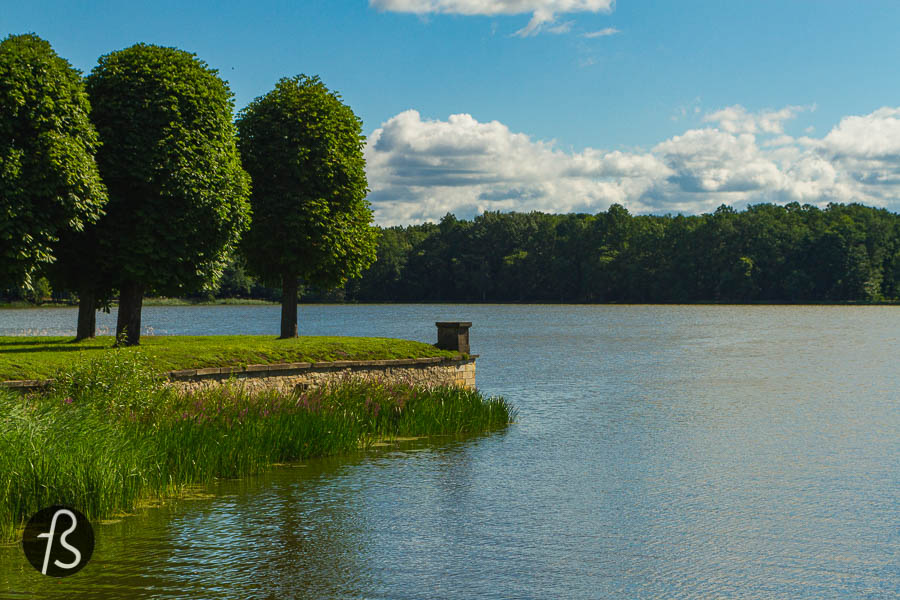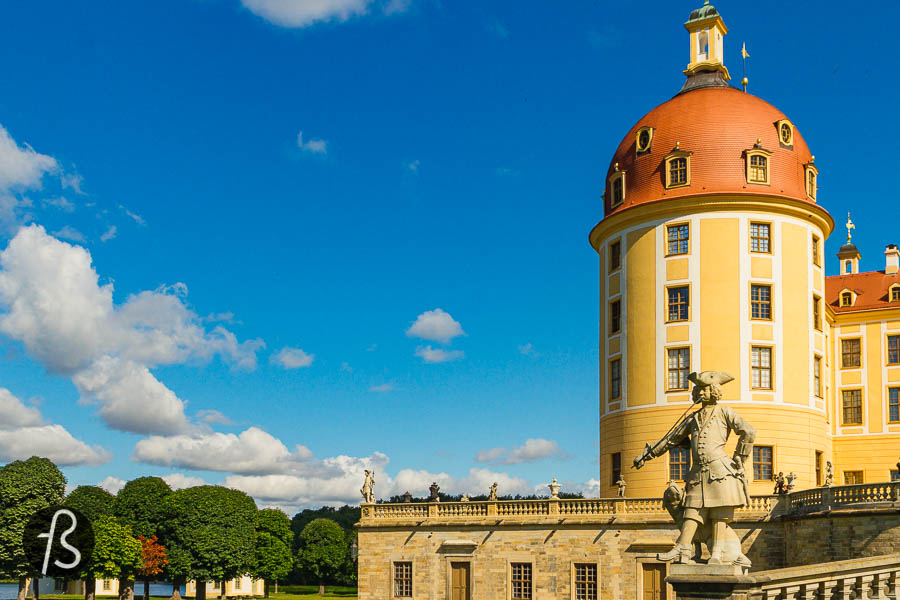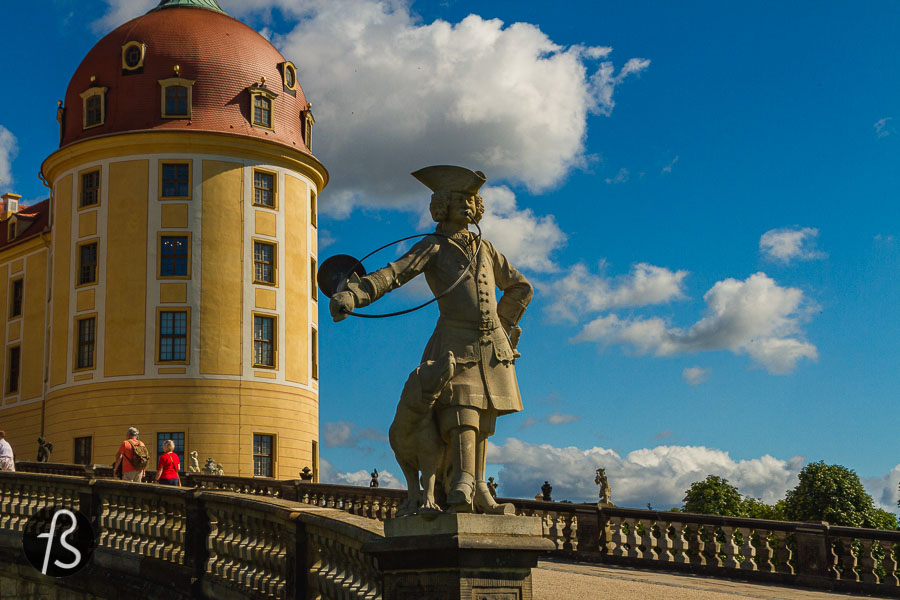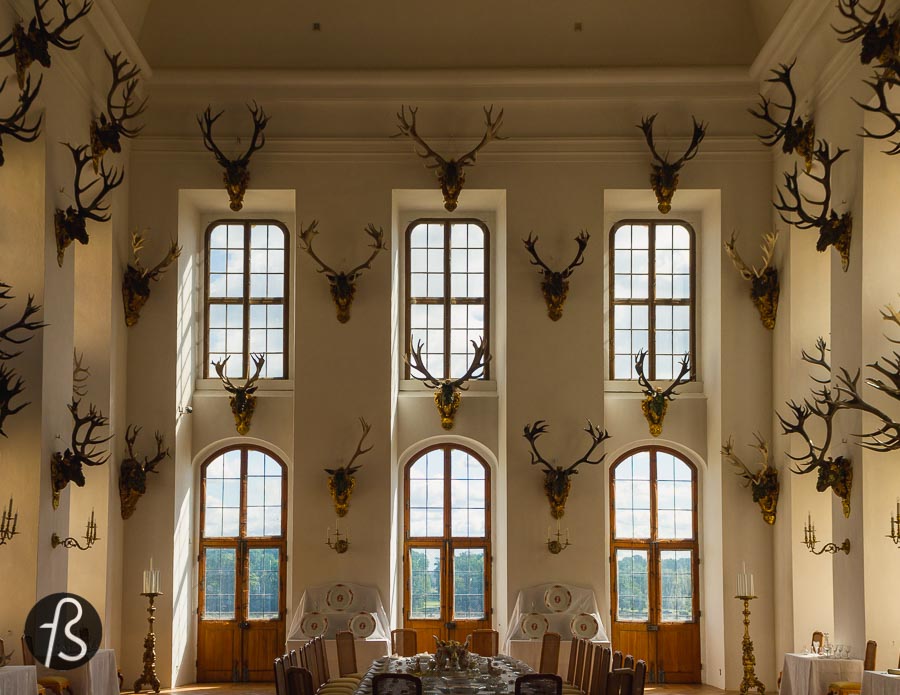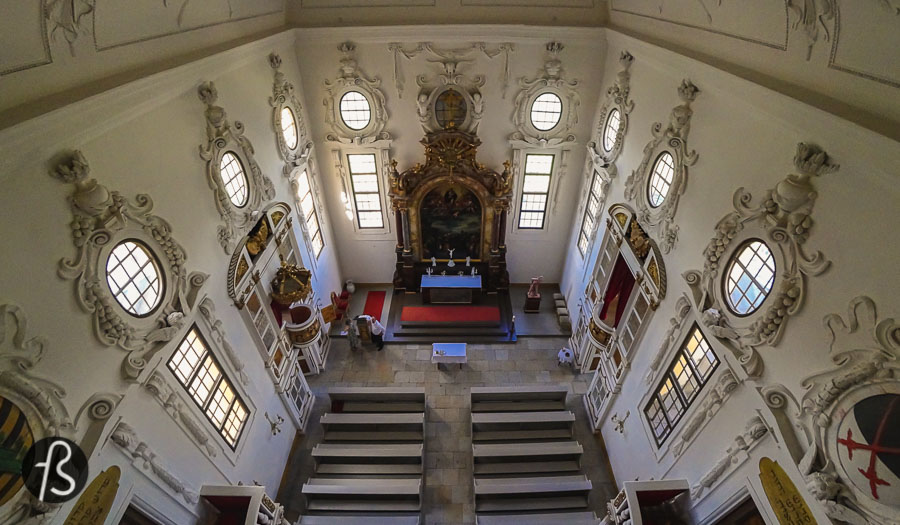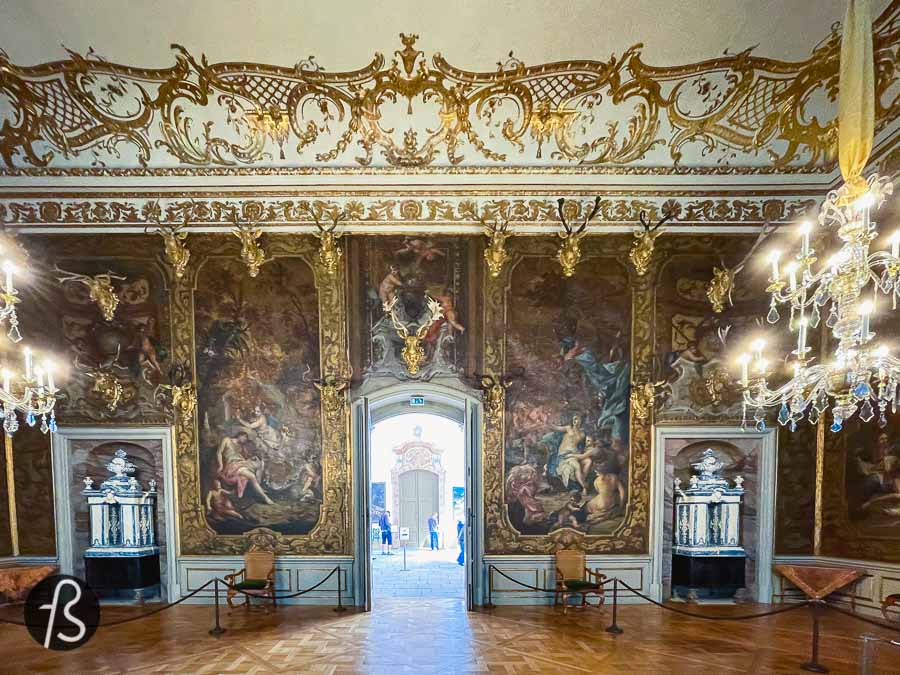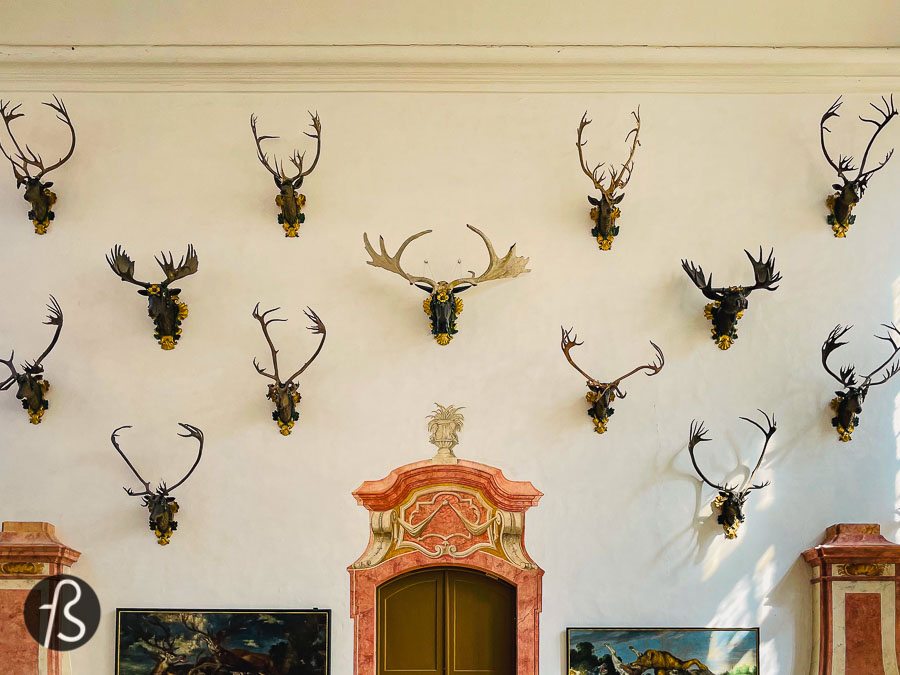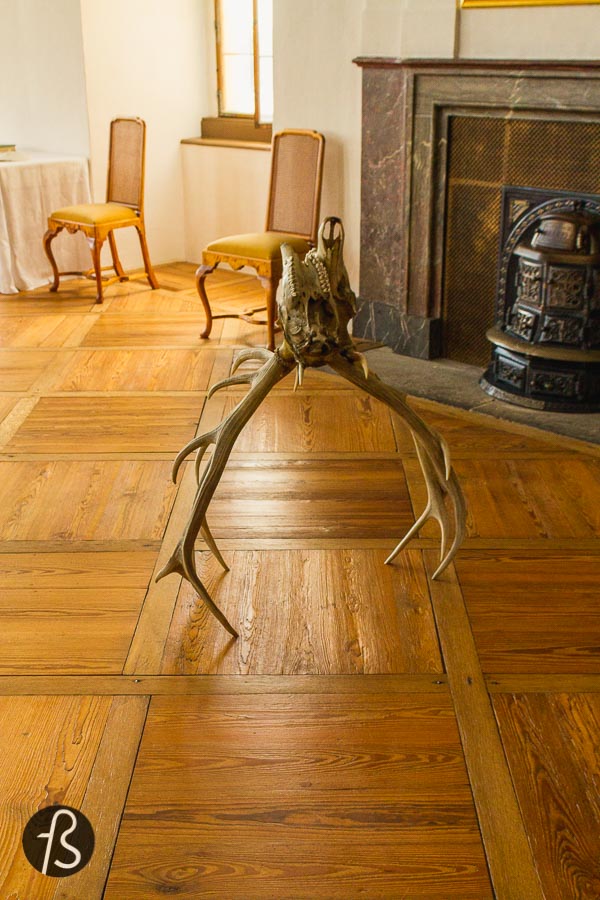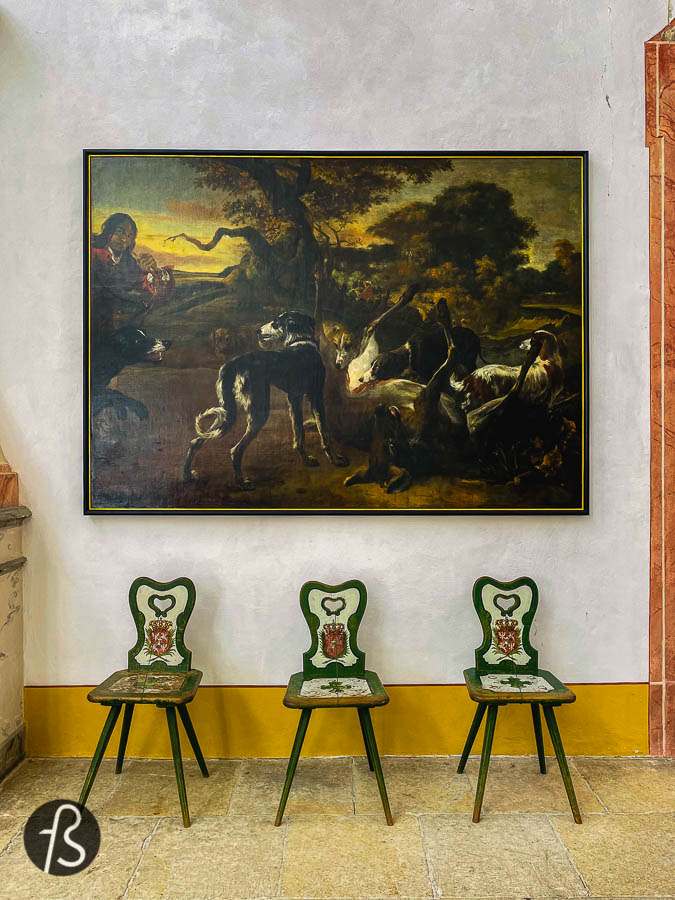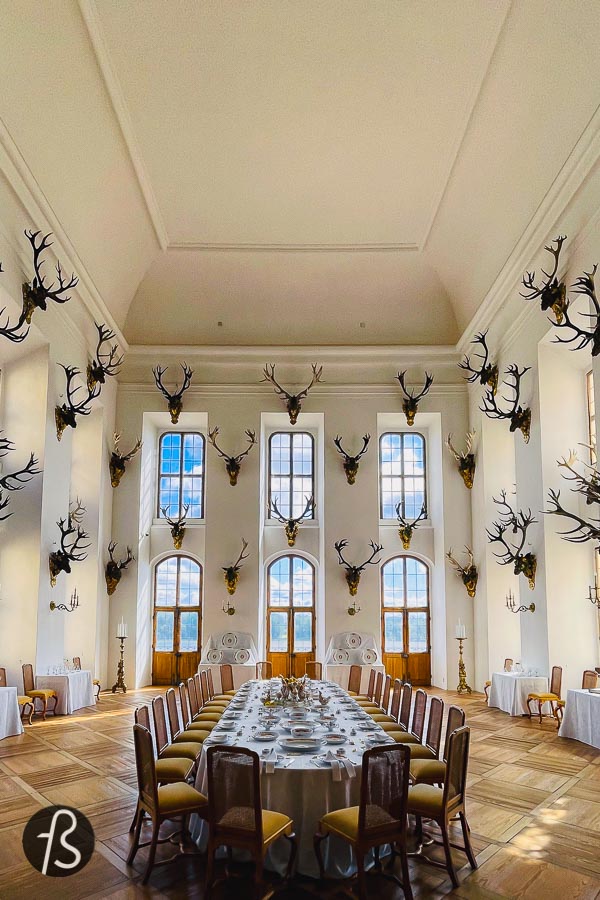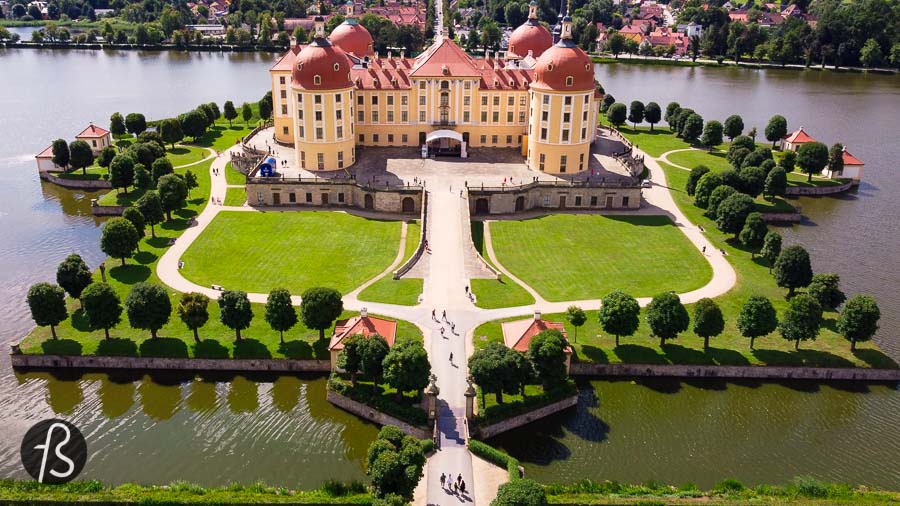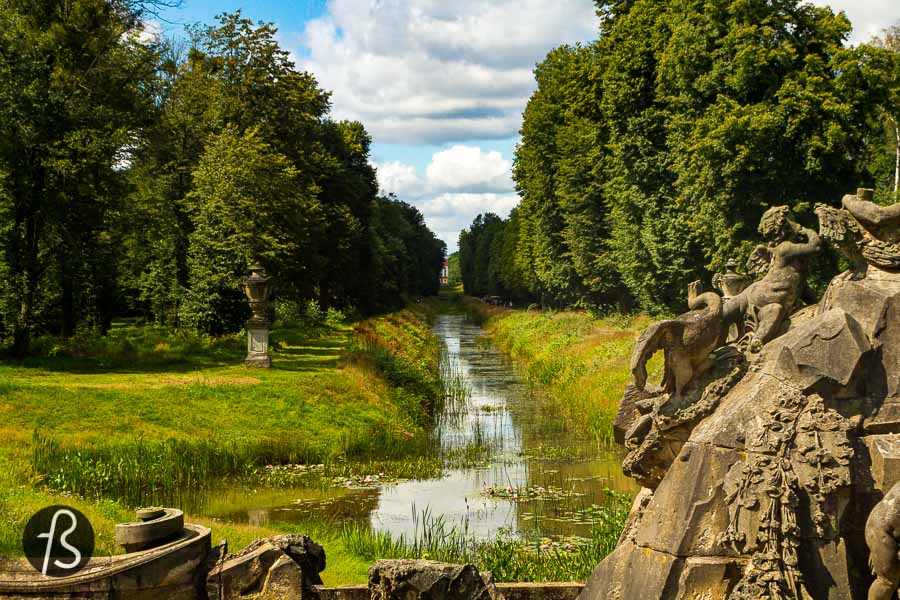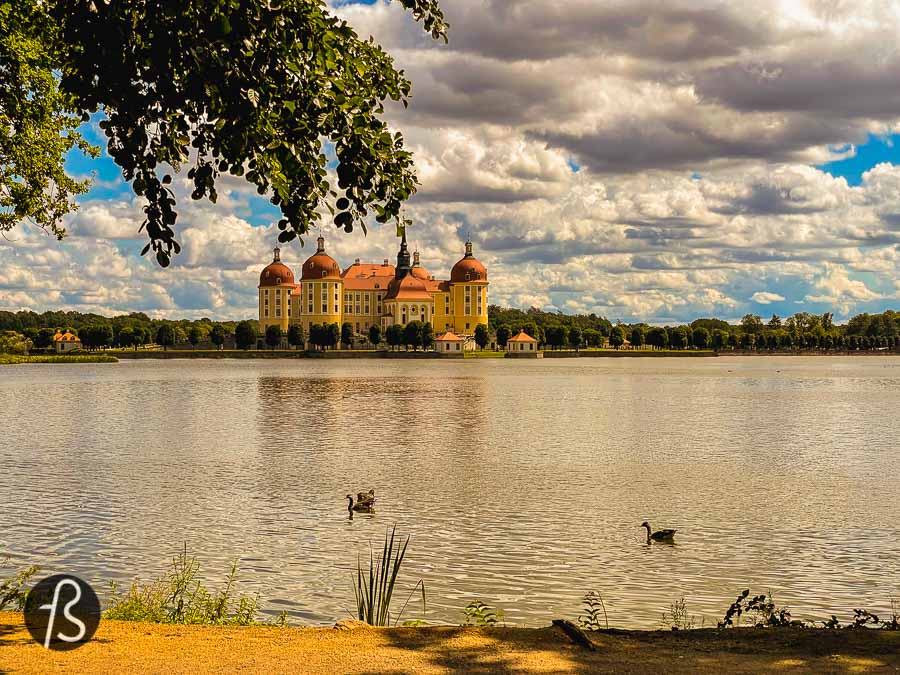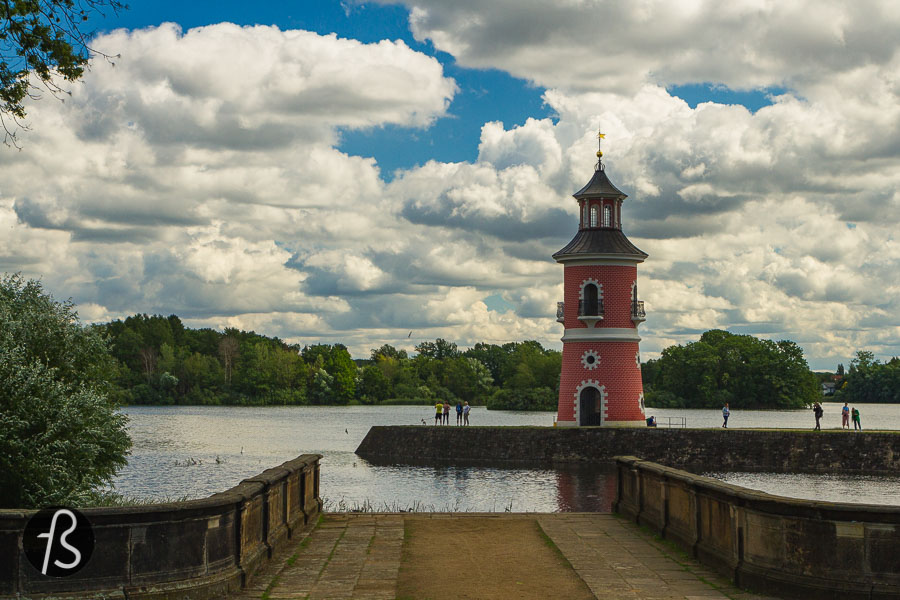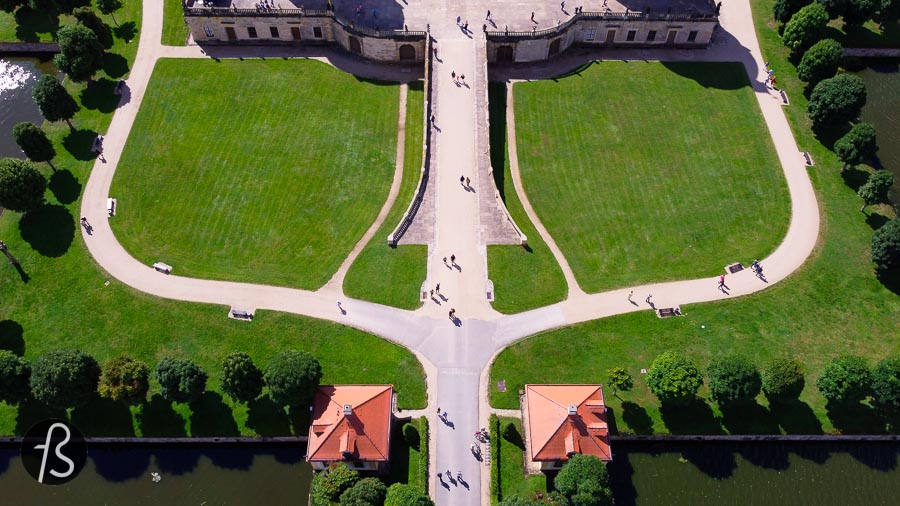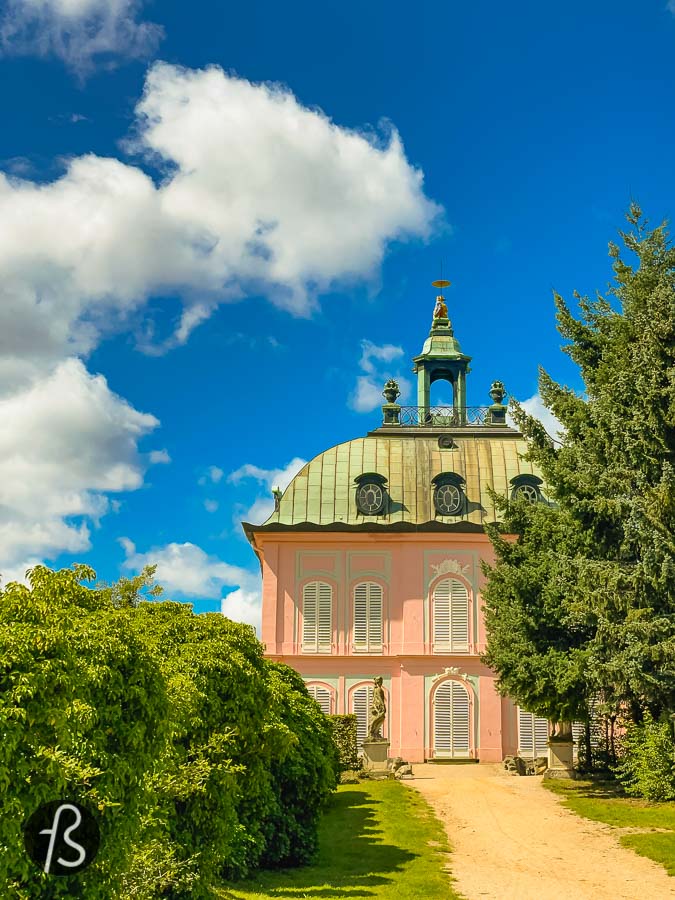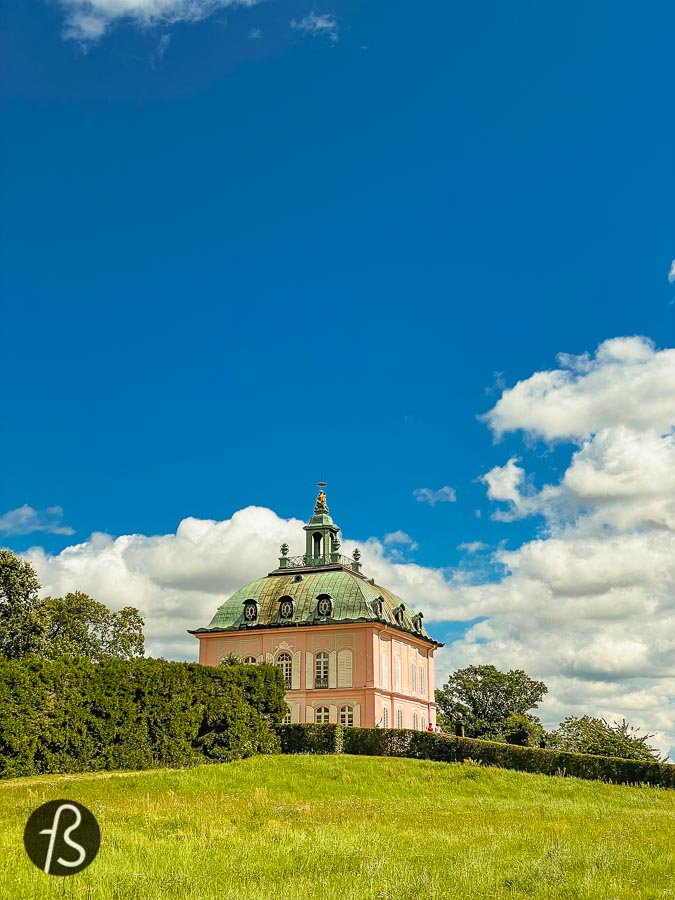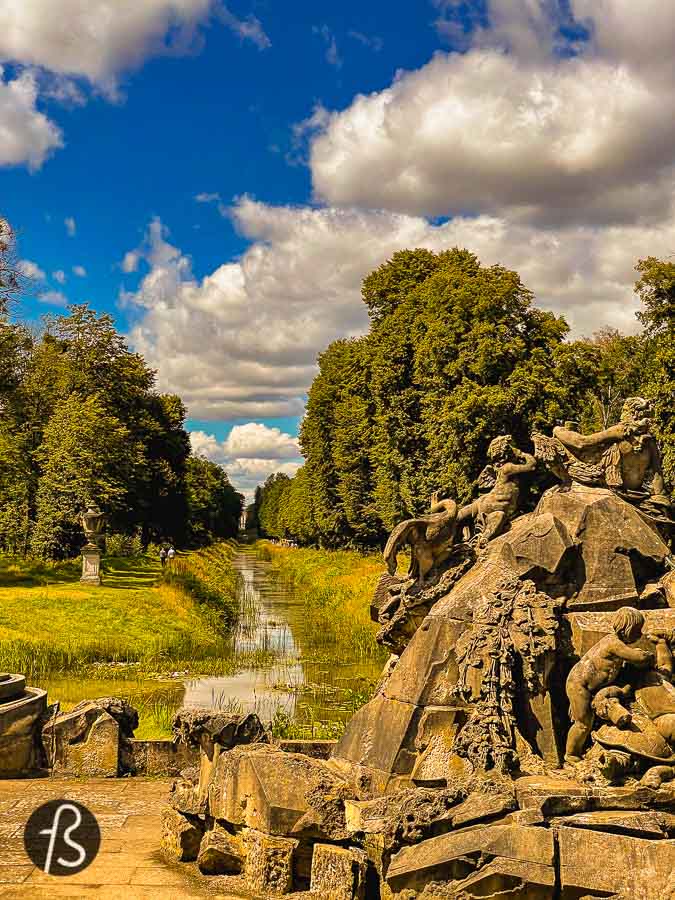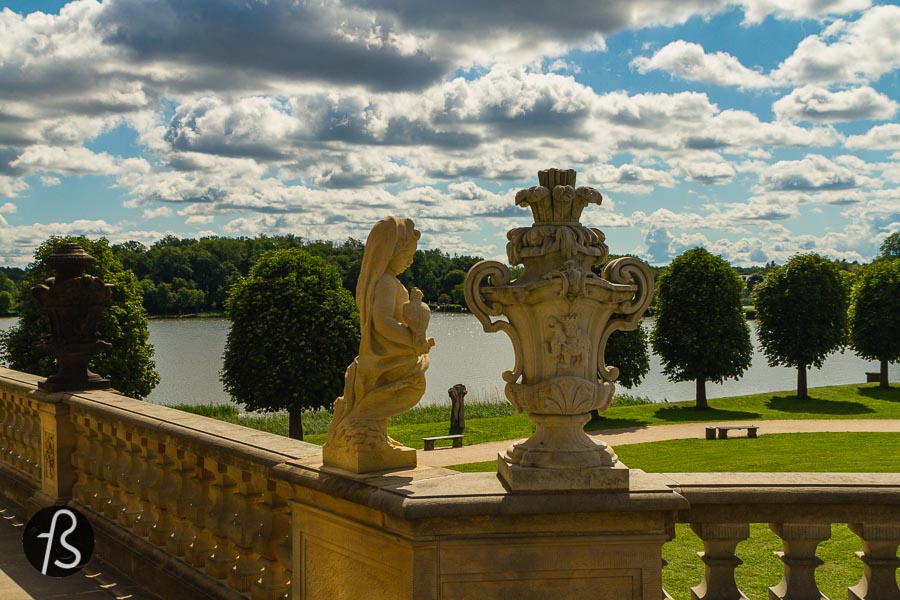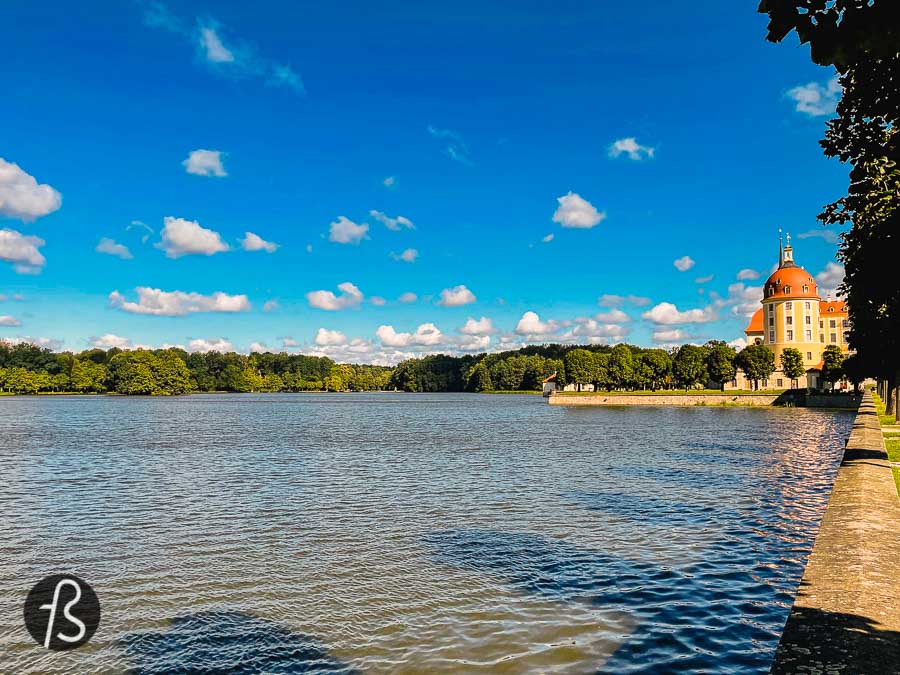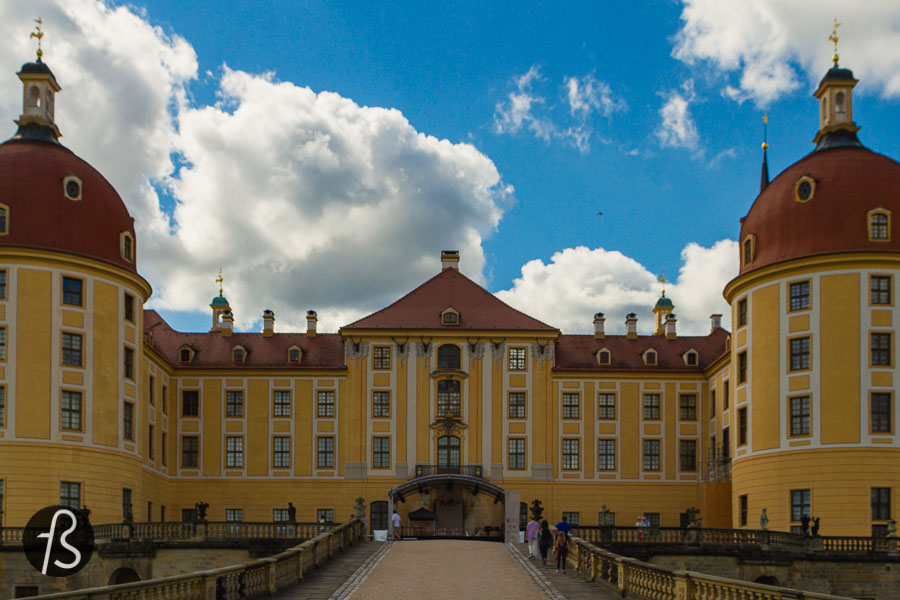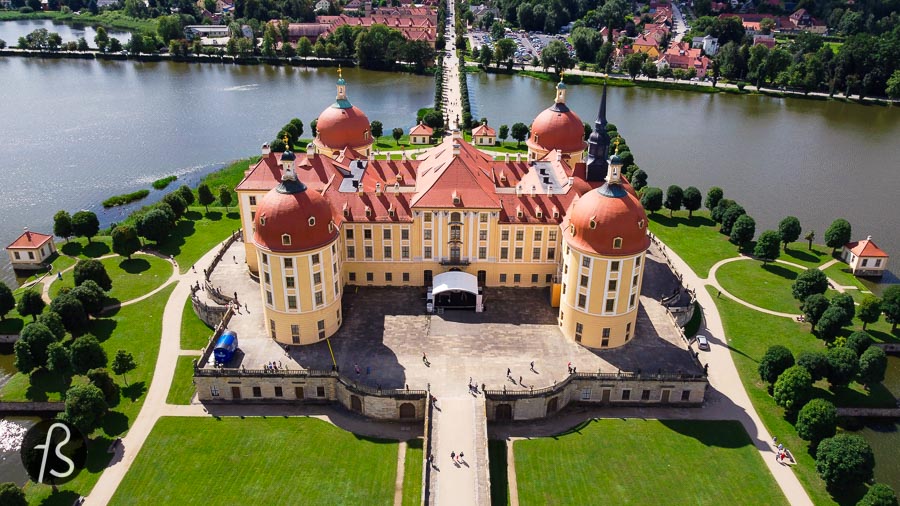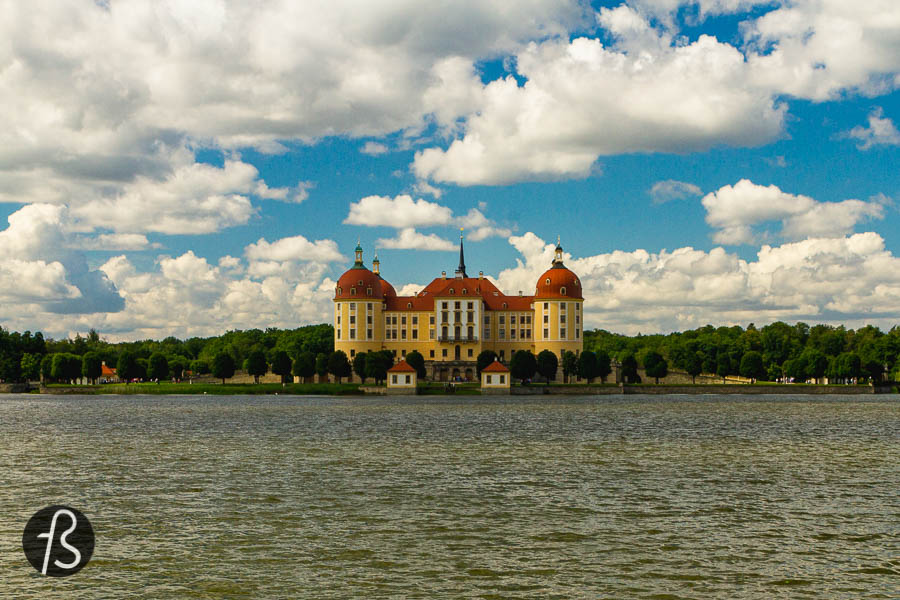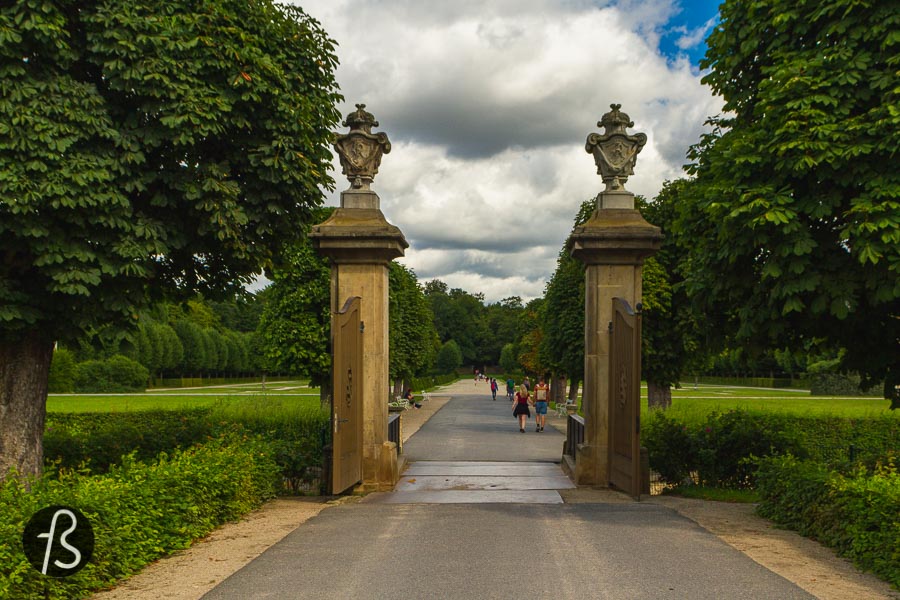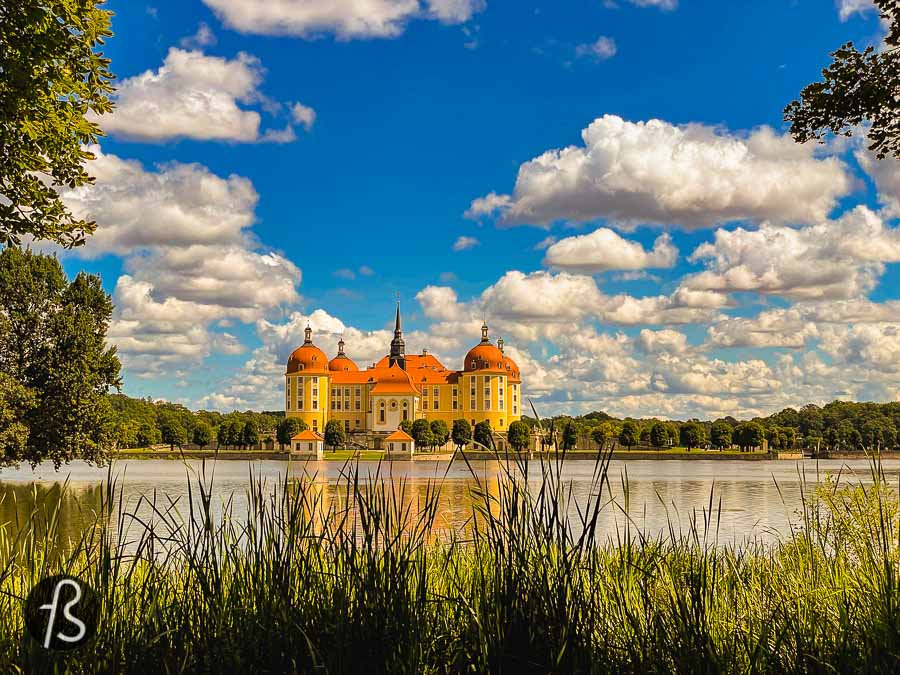First as a hunting lodge, later as a palace; this is the gorgeous Moritzburg Castle in Saxony. This baroque building was built over an artificial island with four towers connected to the main building, making it a fascinating looking fortress.
The most exciting thing about Moritzburg Castle is how harmonious it looks and how integrated it is to its surroundings. The landscape was developed with the castle in mind, and you can clearly see it once you go for a walk around the park. There you will find the Little Pheasant Castle and a lake lighthouse to entertain the kings while staged naval battles happened there.
We visited the Moritzburg Castle in the summer of 2021, on our second trip to Dresden. We had this castle in our plans for a long time, and we are thrilled to be able to visit. And we even managed to fly our drone over it so we could see how beautiful it looks from the top, sitting peacefully surrounded by a lake.
But before we talk a bit about our visit, let’s explain why this castle came to be in the way it’s now.
Moritzburg Castle, from a hunting lodge to a castle
In the 1500s, Duke Moritz had a hunting lodge close to Dresden, and his club was decorated with hunting trophies. The Moritzburg Castle was named after him. The four-round towers that we can see around the castle today come from the hunting lodge era. They were connected to each other by a defensive wall.
In the late 1600s, the castle became the seat of the Moritzburg administration, and a chapel was built there as well. When Augustus II the Strong converted into the Catholic Church in 1697, the castle chapel was consecrated into a catholic church. Since 1699, there have been catholic services in the chapel, and until today they happen.
Augustus II the Strong had the castle remodelled in the following years as a pleasure palace and a hunting lodge in the Baroque style. After his death, his great-grandson, Frederick Augustus III of Saxony, kept improving the castle with the addition of the Little Pheasant Castle and the Great Lake lighthouse, among other things.
In more recent times, Prince Ernst Heinrich of Saxony used the castle as his residence from 1933 until 1945. With the defeat of Nazi Germany, the Moritzburg Castle was found under Soviet occupation. The Wettins family that owned the castle were expropriated. Before the army came to take it over, they buried many of their treasures in the palace gardens. Some of them were found by the Soviet troops, and others were only found in 1996 when archaeologists went looking for them around the state.
Inside the Moritzburg Castle today
Inside the palace, you will find out a bit about the life of Augustus II the Strong and how the elaborate home decor looked at the time. There are gilded leather wallpapers, a game room with a pool table and many monumental looking paintings exhibited throughout the walls.
But the most exciting thing for us was the massive collection of deer antlers that you can spot around the Moritzburg Castle. The most extensive collection can be found in the dining room, also known as Speisesaal in German. There are more than 70 trophies on its wall, all dated between 270 and 400 years old. In the room, you find the heaviest red deer antler in the world, with almost 20 kilos!
The castle is also quite stunning with its baroque architecture and decoration. There are ceiling paintings and sandstone decorations with an altar adorned with an image of an unknown Italian painter delivered to Dresden back in 1744.
The castle park and the surrounding areas
The best way to see the surrounding state at the Moritzburg Castle is by horse-drawn carriage. This way, you can even feel like you are in the 1700s, going for a relaxed stroll.
The original plan for the castle gardens was for a french style structure. Still, these gardens never came to be because of the death of Augustus II the Strong. The plans were altered later and followed the garden style of other European courts of the time.
The lake that you can see today surrounding the Moritzburg Castle has initially been four smaller ponds. Between 1723 and 1733, during the reconstruction of the castle. The large lake that surrounds the court today came to be when the smaller ponds were connected.
The Friedewald, the forest located north of the castle, was cut into a star-shaped system of alleys designed for fox hunting. One of these alleys runs from the castle lake into the state’s east and connects the Moritzburg Castle with the Little Pheasant Castle, also known as Fasanenschlösschen. Close by, you can spot one of the largest baroque fountains in all of Saxony, the beautiful Well of Venus, which is placed to symbolize the end of the canal that runs parallel to the alley.
The Fasanenschlösschen, also known as Little Pheasant Castle, is the smallest palace in Germany. The single-story pavilion was built in 1770 in the middle of the castle’s gardens. The pink palace looks beautiful, but we didn’t have the time to visit it.
In front of the small palace, there is a painted lighthouse and a small harbour built to entertain the monarchs. It mainly was used to stage naval battles, but none of this can happen now since the dock is partially silted. The water in the lake used to be 1,5 meters higher in those days.
Moritzburg Castle is the Cinderella palace of Saxony
The castle has been used as a movie location a few times in its long history. The first fairy tale movie to be shot there was called Sachse kommen durch die Welt and went into the East German cinemas in 1972.
In the same year, the Czechoslovak-German movie Three Hazelnuts for Cinderella was filmed in the castle. It became one of the most famous fairy-tale movies in Central Europe. In 1989, another Cinderella movie was filmed there, and you can see the castle in the trailer below. With this in mind, Moritzburg Castle is clearly the Cinderella castle of Saxony!
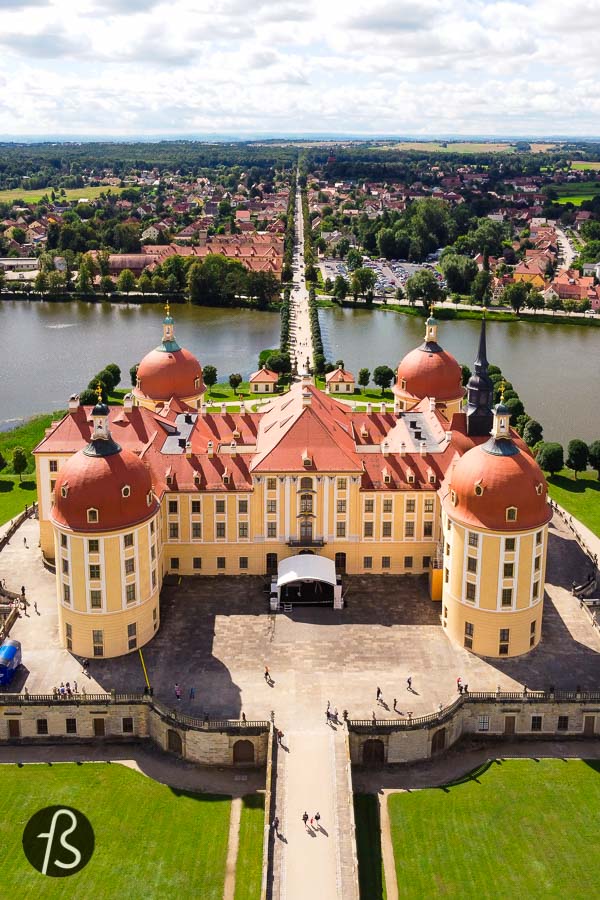

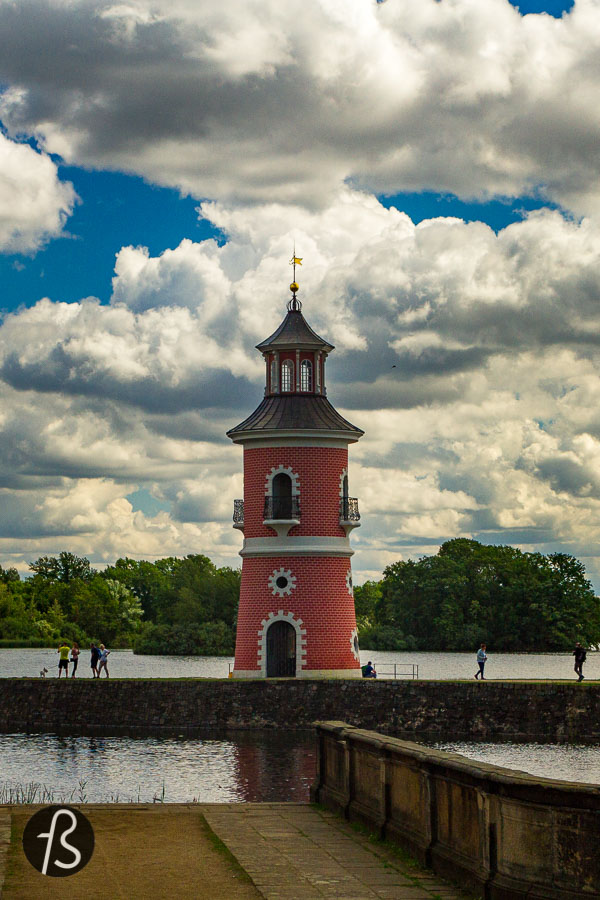
How to arrive in Moritzburg Castle from Dresden
We arrived at the Moritzburg Castle from Dresden by bus, and it was pretty easy to do it. We took a train to the Dresden Neustadt Station and, from there, we took the bus line 477 straight into the castle.
You can also reach the castle by car, and there is a big parking lot in the area next to it so you won’t have any problems with parking.
If you need information about tickets, when the castle is open and everything else, you need to check the official website for that.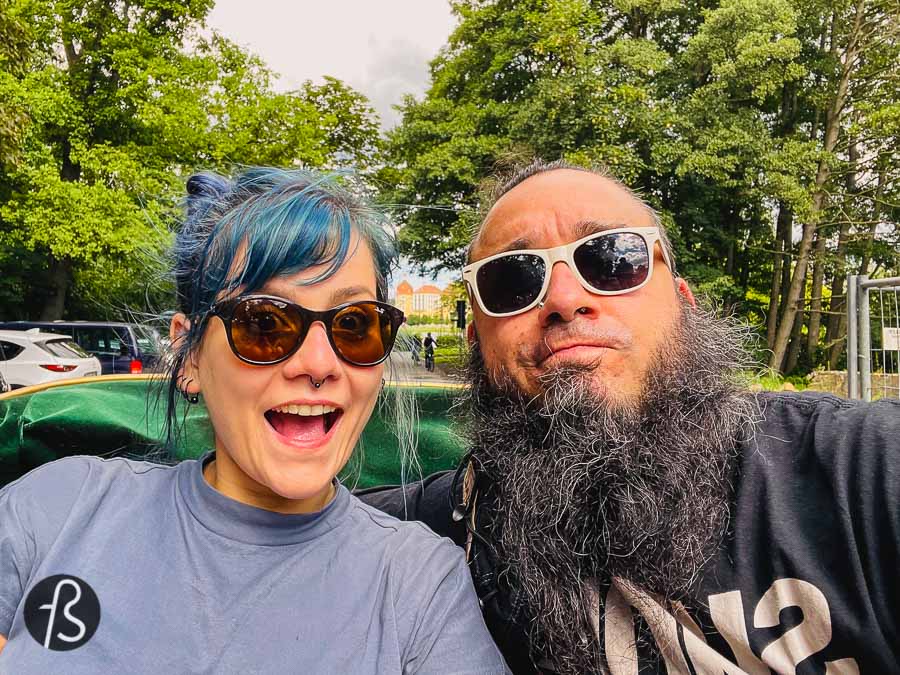
Moritzburg Castle: A fairy tale palace near Dresden
Schloßallee 1, 01468 Moritzburg
If you like what you read here, you should join our Discord channel; there, you will find a place for open discussions about all the themes we talk about here, and it is a free space for you to share your questions, comments and suggestions.
If you are not a fan of the platform, you also can join us on our Facebook group or our Twitter and Instagram. We usually post all the lovely images we see and do there, together with curating the best links of all World Wide Web. No joke!
Subscribe to our newsletter for discounts in hotels and photo gear, freebies and much more.
